Climbing plants, such as climbing plants like clematis, wisteria or ivy, add a vertical, decorative touch to gardens. Their ability to cover walls, trellises or pergolas makes them valuable allies for dressing and structuring outdoor space. Discover how to plant climbing plants correctly to make the most of them.
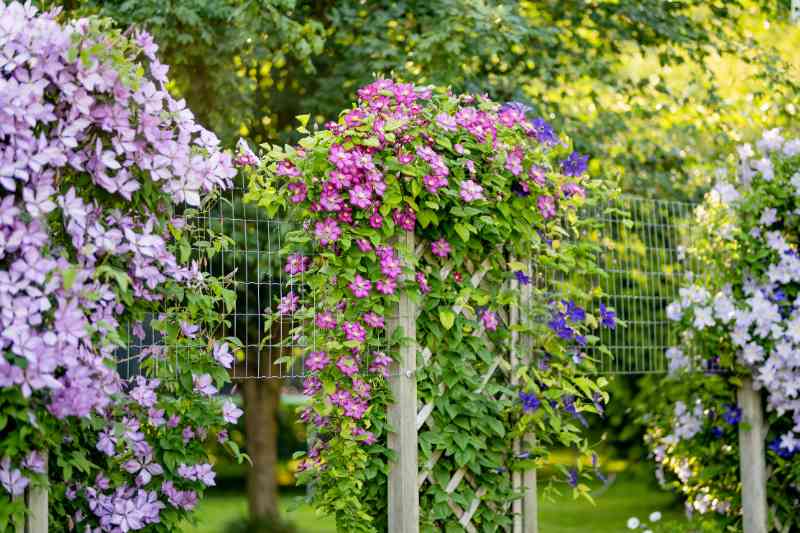
Why plant climbing plants?
Climbing plants offer many advantages:
- Dense plant cover to hide a wall or fence.
- Abundant flowering that brings colour and fragrance.
- Ability to create natural shade over a pergola or trellis.
- Attractiveness for pollinators, favouring biodiversity.
Climbing plants fit into all garden styles: clematis or a climbing rose will add a romantic touch, a passionflower or a bougainvillea will reinforce an exotic atmosphere, while a honeysuckle or a trumpet creeper is perfect for a cottage garden.
Finally, choice of climbing plants depends on intended use: for quick coverage of a wall or pergola, honeysuckle or trumpet creeper are ideal thanks to their vigorous growth. If the aim is to obtain dense screening to preserve privacy, star jasmine or evergreen ivy provide year-round covering foliage. For spectacular, decorative flowering, wisteria or clematis will give cascades of flowers in colours that vary with the seasons.
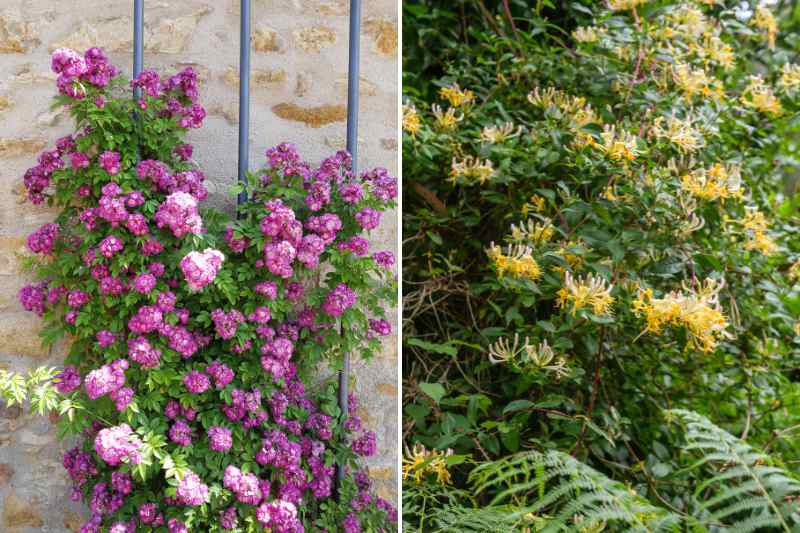
When to plant climbing plants in the garden?
Ideal planting period depends on plant packaging:
- Container-grown plants: planting can be done from spring through autumn, avoiding frost periods or very hot spells.
- Bare-root plants: among climbing plants, these are mainly rambling roses and climbing roses. For these, it is preferable to plant in autumn after leaf fall, or in early spring before growth resumes.
These periods make rooting easier before extreme climatic conditions.
Where to plant climbing plants?
- Aspect: while most climbing plants appreciate full sun or partial shade, some species such as climbing hydrangea, ivy or akebia do better in shade. It is therefore essential to adapt the location to each plant's specific needs to ensure optimal growth and abundant flowering.
- Soil type: well-drained soil is essential to avoid excess water.
- Soil moisture: a cool soil, without waterlogging, is ideal.
- Planting depth: for container-grown plants, plant at same level as in pot. For climbing roses with bare roots, be careful to cover roots well without burying the collar.
Take into account many of them are fragrant (roses, jasmines, honeysuckles...) and plant them near a path or house entrance!
Climbing plants can also be grown in pots, provided a container large enough and well drained is chosen to favour root development. They need a rich substrate, regular watering and a sturdy stake or trellis to guide them.
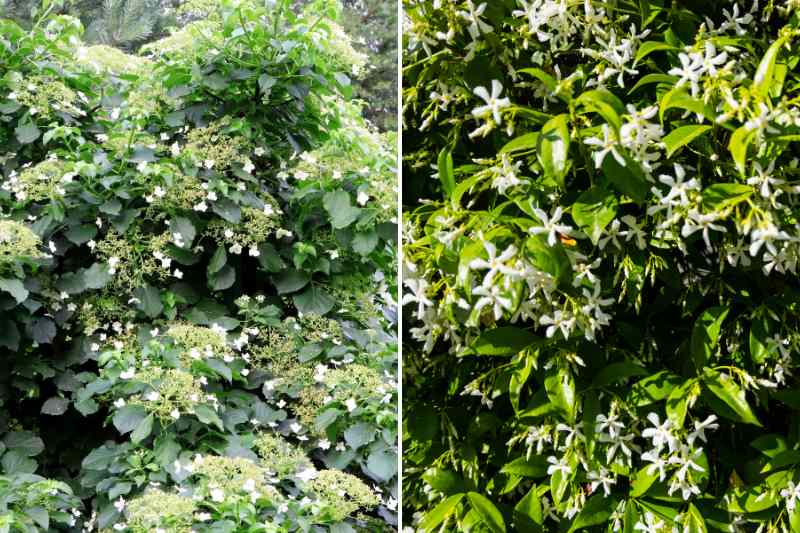
Necessary equipment
Before starting, have the following tools ready:
- A spade or digging fork to dig the planting hole.
- A hand trowel to help position the plant.
- Gardening gloves
- A watering can
- Compost to enrich soil if necessary.
- A stake, trellis or other support to hold the plant as it grows.
Important! To secure climbing stems without injuring them, use soft ties such as raffia, rubber ties or velcro straps, tying loosely to allow room for growth. For voluble or tendril-bearing varieties, it is preferable to provide an appropriate support, such as a trellis or taut wires, guiding shoots regularly without forcing their natural attachment.
Practical steps to plant climbing plants
Follow these steps for successful planting:
- Soil preparation: loosen soil to depth of 30 cm and incorporate compost if soil is poor.
- Digging the planting hole: dig hole about 40 cm deep and wide, positioned 30 cm from support on which plant will climb.
- Preparing the plant: if plant is container-grown, gently tease out roots. For a climbing rose with bare roots, trim root tips slightly to stimulate regrowth.
- Placing the plant: set plant in hole with roots facing down and ensure collar is at soil level. Note that some climbing plants, such as clematis, benefit from being planted at an angle, almost horizontally, to encourage emission of new shoots from the base and prevent a bare stem too quickly.
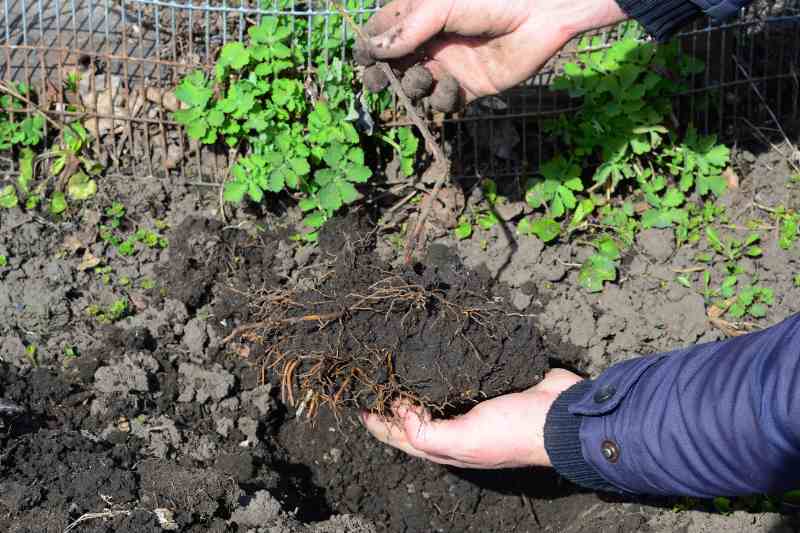
- Backfilling: refill hole with excavated soil, firming lightly to remove air pockets.
- Watering: water generously to ensure good contact between roots and soil.
- Installing the support: attach main stem to stake or trellis without overtightening to guide growth.
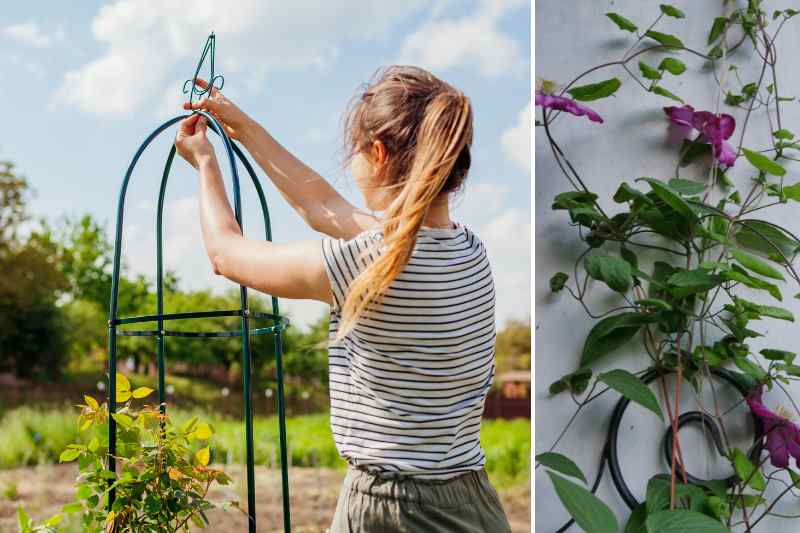
Oli's little note: combining climbing plants with other vegetation creates aesthetic, complementary compositions, such as the pairing of climbing roses and clematis, which flower at different times and support each other. Similarly, combining wisteria with an evergreen bush offers an interesting contrast between spectacular flowering and permanent foliage, bringing structure and dynamism to the garden all year round.
After planting: care and maintenance of climbing plants
- Watering: keep soil moist during first weeks, especially in dry periods.
- Mulching: apply organic mulch around base to conserve moisture and limit weeds.
- Fertilisation: in spring, apply a phosphorus-rich fertiliser to stimulate flowering.
- Pruning: cut lateral shoots to encourage upward growth and better branching. Regular pruning stimulates flowering of climbing plants by removing dead wood and encouraging production of new vigorous shoots. Some species such as wisteria or trumpet creeper, which develop rapidly, require strict pruning to prevent them becoming invasive and to better control their growth on their support.
- Monitoring: inspect plant regularly for pests or diseases and intervene if necessary.
































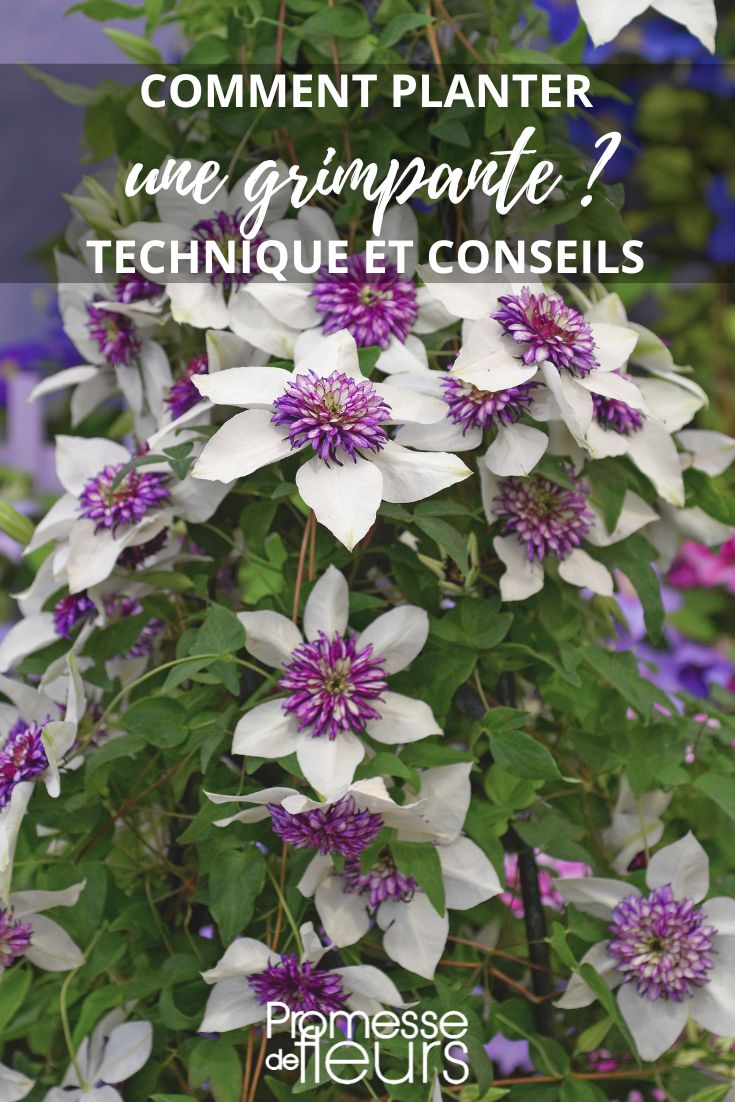
Comments